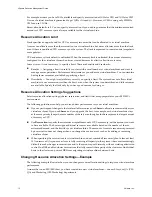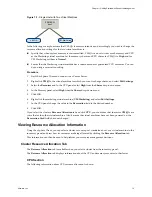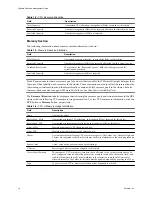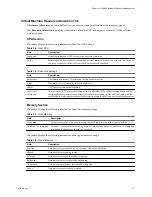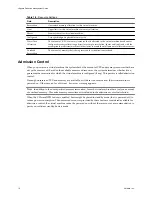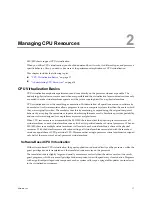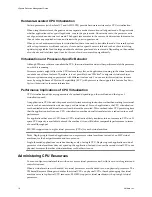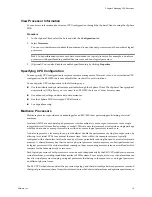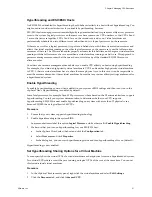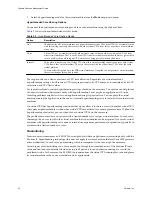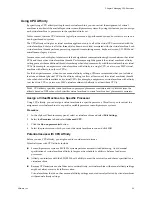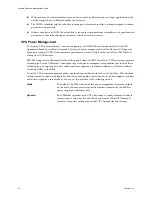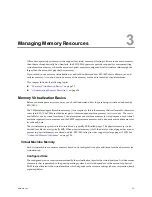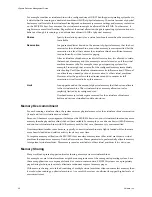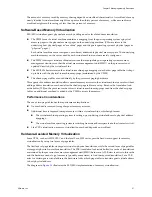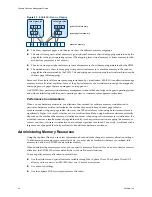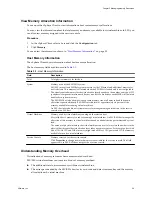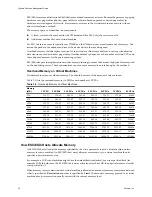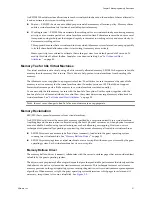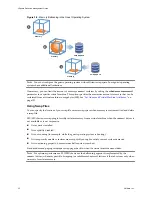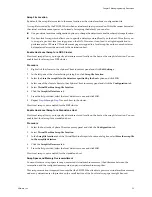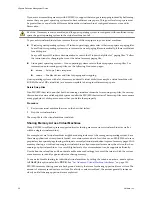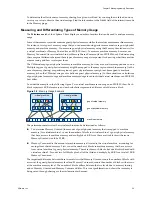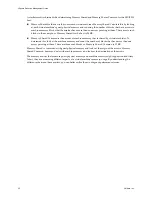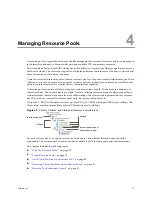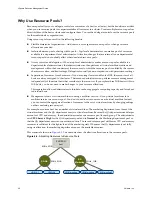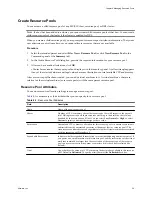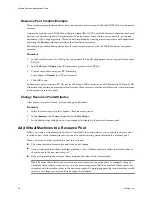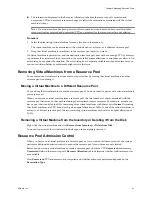
For example, consider a virtual machine with a configured size of 1GB. When the guest operating system boots,
it detects that it is running on a dedicated machine with 1GB of physical memory. The actual amount of physical
host memory allocated to the virtual machine depends on its memory resource settings and memory contention
on the ESX/ESXi host. In some cases, the virtual machine might be allocated the full 1GB. In other cases, it
might receive a smaller allocation. Regardless of the actual allocation, the guest operating system continues to
behave as though it is running on a dedicated machine with 1GB of physical memory.
Shares
Specify the relative priority for a virtual machine if more than the reservation
is available.
Reservation
Is a guaranteed lower bound on the amount of physical memory that the host
reserves for the virtual machine, even when memory is overcommitted. Set the
reservation to a level that ensures the virtual machine has sufficient memory
to run efficiently, without excessive paging.
After a virtual machine has accessed its full reservation, it is allowed to retain
that amount of memory and this memory is not reclaimed, even if the virtual
machine becomes idle. For example, some guest operating systems (for
example, Linux) might not access all of the configured memory immediately
after booting. Until the virtual machines accesses its full reservation, VMkernel
can allocate any unused portion of its reservation to other virtual machines.
However, after the guest’s workload increases and it consumes its full
reservation, it is allowed to keep this memory.
Limit
Is an upper bound on the amount of physical memory that the host can allocate
to the virtual machine. The virtual machine’s memory allocation is also
implicitly limited by its configured size.
Overhead memory includes space reserved for the virtual machine frame
buffer and various virtualization data structures.
Memory Overcommitment
For each running virtual machine, the system reserves physical memory for the virtual machine’s reservation
(if any) and for its virtualization overhead.
Because of the memory management techniques the ESX/ESXi host uses, your virtual machines can use more
memory than the physical machine (the host) has available. For example, you can have a host with 2GB memory
and run four virtual machines with 1GB memory each. In that case, the memory is overcommitted.
Overcommitment makes sense because, typically, some virtual machines are lightly loaded while others are
more heavily loaded, and relative activity levels vary over time.
To improve memory utilization, the ESX/ESXi host transfers memory from idle virtual machines to virtual
machines that need more memory. Use the Reservation or Shares parameter to preferentially allocate memory
to important virtual machines. This memory remains available to other virtual machines if it is not in use.
Memory Sharing
Many workloads present opportunities for sharing memory across virtual machines.
For example, several virtual machines might be running instances of the same guest operating system, have
the same applications or components loaded, or contain common data. ESX/ESXi systems use a proprietary
page-sharing technique to securely eliminate redundant copies of memory pages.
With memory sharing, a workload consisting of multiple virtual machines often consumes less memory than
it would when running on physical machines. As a result, the system can efficiently support higher levels of
overcommitment.
vSphere Resource Management Guide
26
VMware, Inc.
Summary of Contents for ESX 4.0
Page 6: ...vSphere Resource Management Guide 6 VMware Inc...
Page 44: ...vSphere Resource Management Guide 44 VMware Inc...
Page 52: ...vSphere Resource Management Guide 52 VMware Inc...
Page 72: ...vSphere Resource Management Guide 72 VMware Inc...
Page 80: ...vSphere Resource Management Guide 80 VMware Inc...

